Whether choosing the correct lampshade size for your furniture or trying to create a symmetrical look, lampshade measurement is essential to the design. When it comes to lamp shades, there are a few specific measurements you will need to take to find the perfect one for your needs. Here is a guide on how to measure lamp shades like a pro.
What Size Lamp Shade Is Appropriate?
The lamp base is essential to determine what size shade your lamp needs. Your lampshade should be one-third the height of the overall lamp and twice as wide as the base.
Let’s make it easier for you; if the lamp base is 8 inches wide, you should look for a lampshade that is 16 inches in diameter.
Additionally, if your lamp stands 20 inches tall, then your lampshade should be 6.7 inches in height.
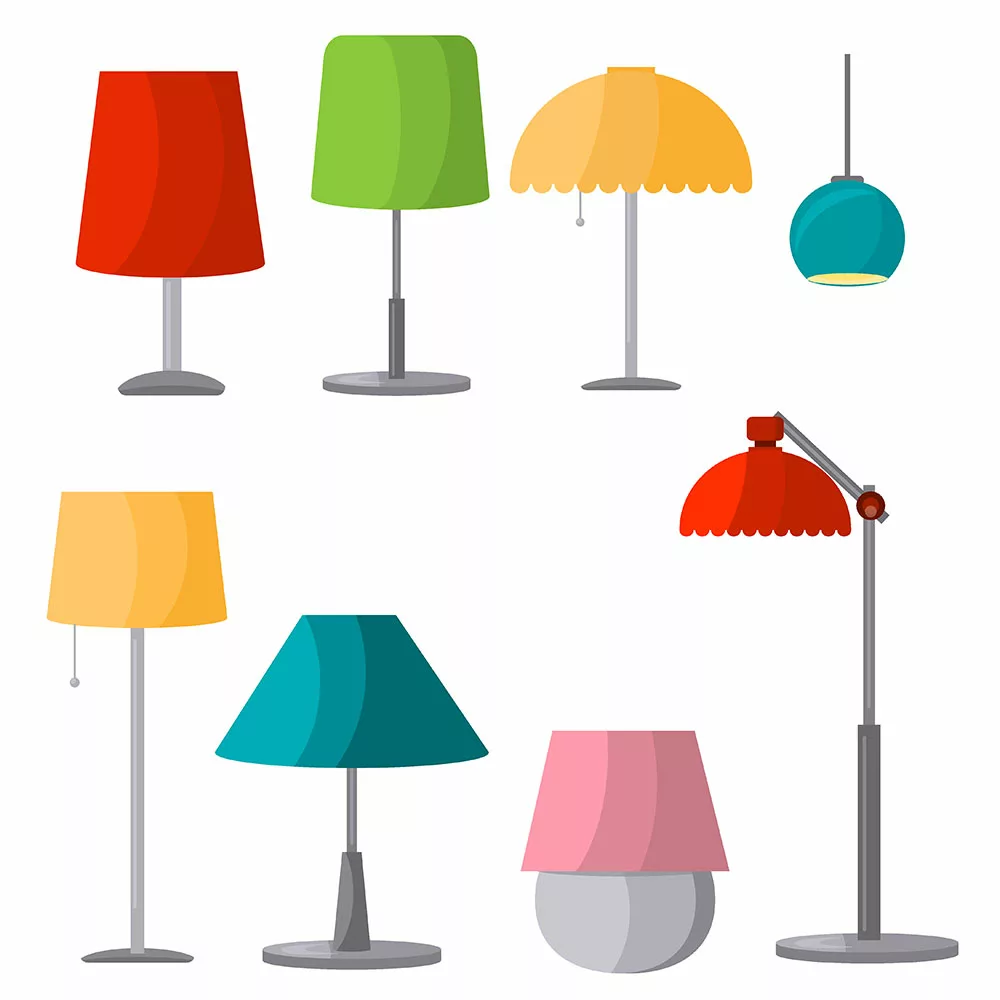
Lamps furniture set
The Best Way to Measure a Lampshade
There are three main dimensions that you must consider when measuring a lampshade: the shade height (or vertical slant), the top width, and the bottom width.
Start by measuring the height of the shade. You can measure it as the vertical height from the top of the shade to where the shade meets the lamp body (base).
The next step is to measure the lampshade’s top and bottom widths. Measure the top width from one side of the shade to the other, and then measure the bottom width from one side to the other.
Now that you know all three dimensions, you can find a shade that is the right fit for your lamp.
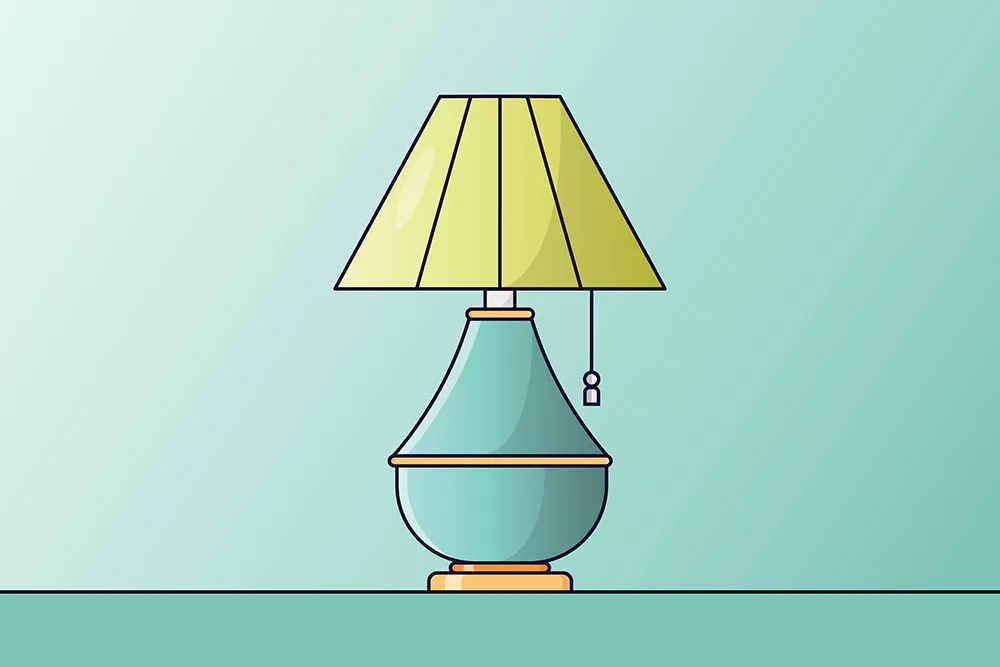
Colorful lampshade
Picking a Lampshade: Tips and Tricks
Shape
There are several shapes to choose from. The shape of the shade should be in proportion to the size of your lamp base. The shape will affect how the lampshade disperses the light, so keep that in mind when selecting.
Rectangle
Match rectangular lamp bases with rectangular lamp shades for a trendy or contemporary effect. These lampshades are ideal for bringing a sense of balance and symmetry.
Bell
Bell-shaped shades are great for modern, traditional, and transitional style lamps. The sides of bell shades slope downwards, and they often have some trim or embellishment. The ambient light emitted from bell shades is a bit softer than other shades.
Drum
Drum shades are a popular and versatile choice. They come in oversized and standard sizes, and you can use them on almost any lamp. The light emitted is more directional than other shades, making them ideal for task lighting.
Empire
These shades feature a tall profile and a slightly tapered shape. They look best on a taller base and are often used in traditional-style lamps.
Coolie
Coolie shades have a rectangular top, with a more tapered look than the rectangle shade. They are best as table lamps or floor lamps with an Asian-inspired design.
Square
Square lamp shades have straight sides and a flat bottom, which creates a more modern look. They are often used on floor lamps, wall sconces, and other light fixtures.
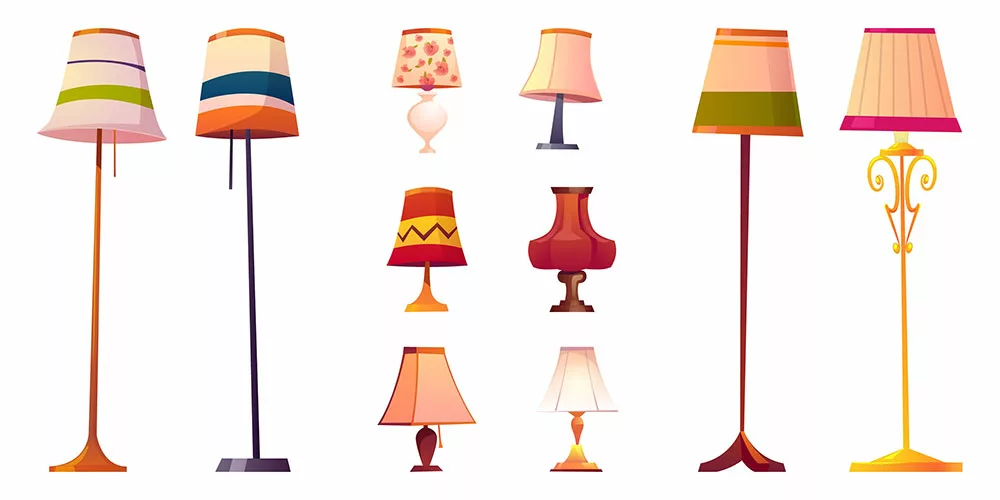
Different lampshades on long and short stands
Balance
When it comes to balance, the shade should always be larger than the base since it draws attention to the lamp. However, ensure the shade is not too large and overwhelms the lamp.
A good rule of thumb is to go for more detailed and eye-catching shades if your lamp base is plain and simple shades if your lamp base is already quite elaborate.
Materials
Common materials used for lampshades include fabric, paper, burlap, linen, and metal. Each material has its unique look and feels so you can choose the best one for your lamp and decor.
Additionally, certain materials may be easier to clean or maintain than others. For example, fabric lamp shades may require regular vacuuming or spot-cleaning to remain crisp and clean. Metal shades are often easier to keep clean and are better suited for wet or humid climates.
Color
The color of the shade can drastically change the look of a room. You can select one that complements the room’s color scheme or opt for something bolder for a statement look.
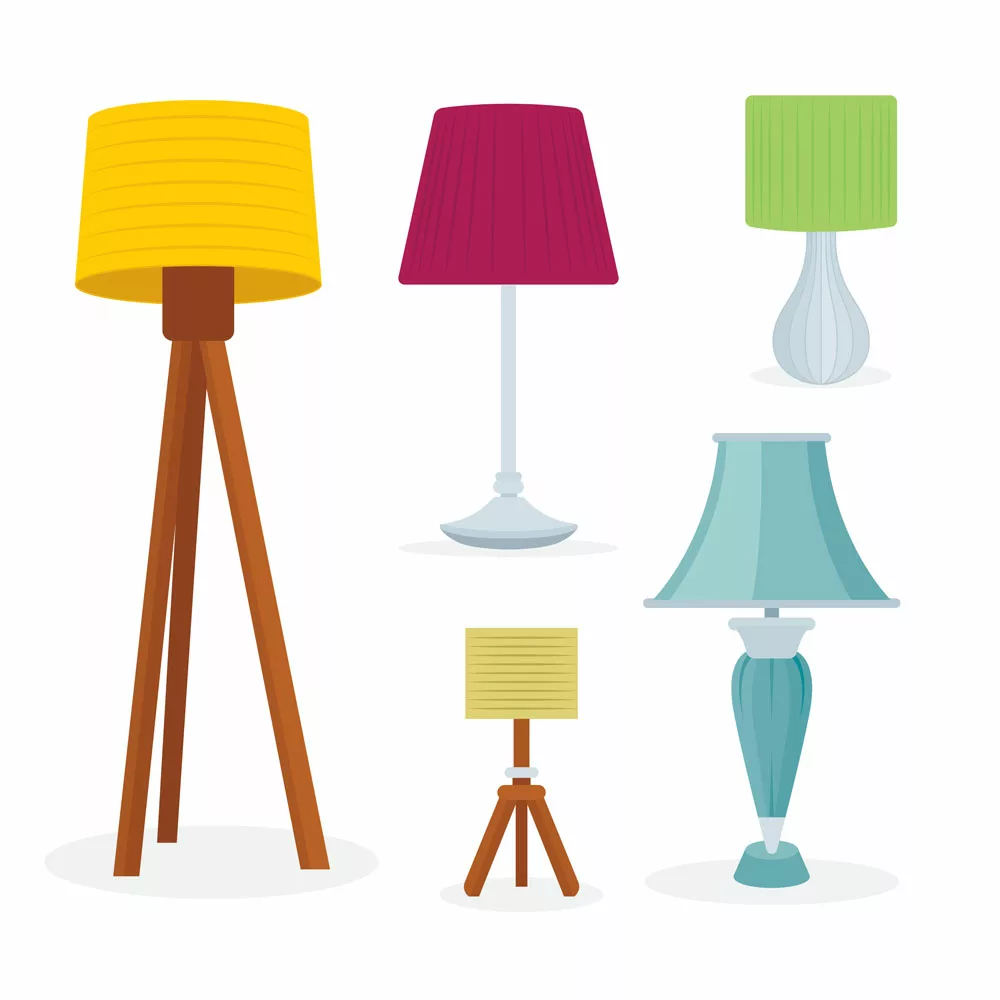
Different lampshade set
Lamp Shade Fittings
Now, it’s time to focus on finding the correct fitting. Lampshades are typically available in two different fittings, spider and uno harp.
How to Measure Lamp Shades – Spider Fitting
Manufacturers fabricate this type of shade with a metal frame called a spider. The spider attaches to the lamp’s harp with a ring. Spider fittings are usually adjustable and can fit a variety of lamp harps.
How to Measure Lamp Shades – Uno Harp Fitting
This shade fits directly on the lamp’s harp without any additional hardware. Uno lamp shades are usually more difficult to find but are also the simplest to install.
Maximum Light Bulb Wattage
Finally, consider the maximum light bulb wattage. Your shade should accommodate the wattage of the light bulb you plan to use.
If the wattage is too high for your shade, it could be a fire hazard. To determine what wattage is safe for your shade, check the manufacturer’s label or the weight rating on the frame of your shade. Here is a wattage-space ratio guide.
For medium-sized light bulbs:
- 25-watt bulbs: 1.5 inches of space.
- 25- to 40-watt bulbs: 2 inches of space.
- 40- to 60-watt bulbs: 2.5 inches of space.
- 75- to 100-watt bulbs: 3 inches of space.
- 150-watt bulbs: 4 inches of space.
How to Measure Lamp Shades – For candelabra-style light bulbs:
- 25-watt bulbs: 1.75 inches of space.
- 25- to 40-watt bulbs: 2 inches of space.
- 40- to 60-watt bulbs: 2.5 inches of space.

Hand holding a light bulb
10 Shortcuts to Choose the Right Lamp Shade
- A round lamp base looks best with a round or hexagonal shade, while a square or angular base is better suited for a square shade.
- Empire style is always a good choice if you can’t decide on a shade shape.
- The height of your shade should be 2/3 the height of the base, and the width should be twice the width of the base.
- Pleats are traditional, while smooth fabric leans more contemporary.
- The shade should hide all hardware components.
- Take your lamp with you when shopping for shades to get an idea of how they’ll look together.
- Mixing opposites creates a stylish statement—for example, try pairing a sleek metal base with an organic wood grain shade.
- Consider the mood you want to create before selecting your shade material: warm tones like brass or gold create a cozy atmosphere, while cooler metals like chrome or nickel give off a more modern vibe.
- Don’t be afraid to add some color! Shades in bold shades like red, green, or navy can impact a room without being too overwhelming.
- Remember that the shade should reflect the style of your lamp. For example, if you have a rustic lamp base, try choosing a natural fiber shade instead of something synthetic.
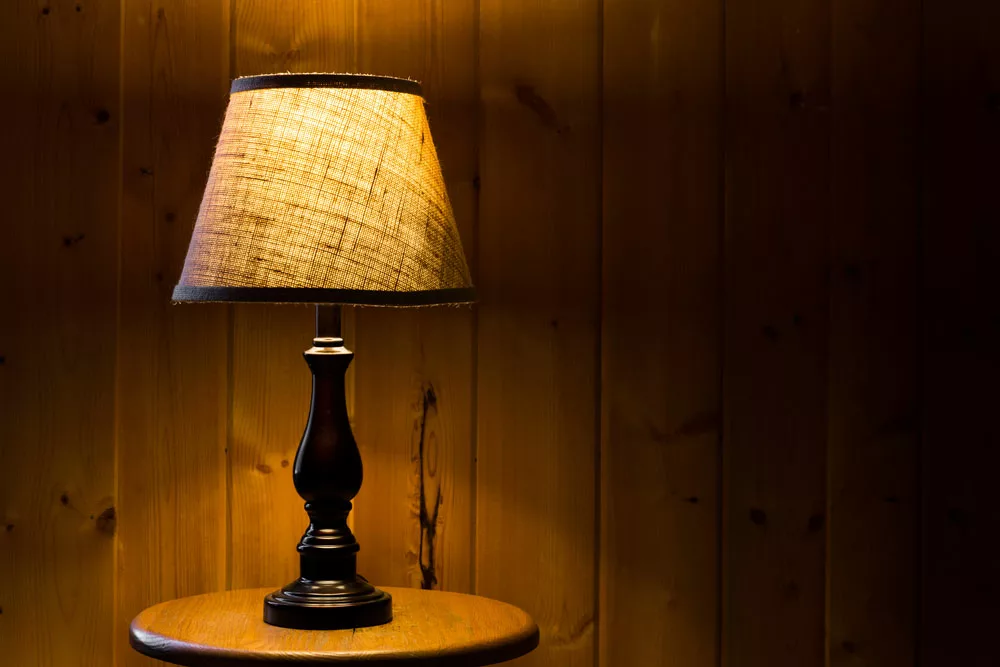
Tabletop lamp with burlap shade
How to Measure Lamp Shades – How to Change a Lamp Shade Fitting
Find a New One
The first step is to find a new shade that fits the lamp. Make sure it fits the size and type of fitting you have.
Remove the Old One
Depending on the type of fitting, you will need to unscrew or loosen the ring that holds the shade in place.
If it is a spider fitting, you will need to loosen the metal rods that hold it in place. If it is an Uno fitting, there won’t be any screws, and you will need to loosen the ring by hand.
Clean the Lighting Fixture Before Attaching the New One
This step will help ensure that it fits properly and looks its best.
Attach the New Hamp Shade
Once the lighting fixture is clean, you can attach the new shade. Make sure it is secure and all the parts are in place.
Turn On the Light
Finally, please turn on the light to ensure it is working correctly and that the shade is securely in place.
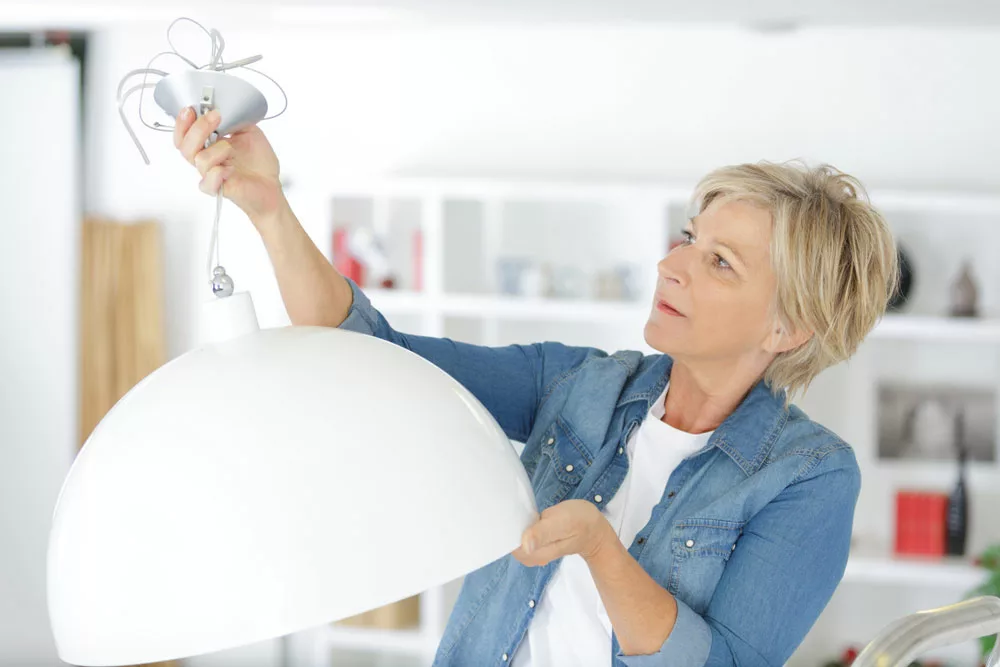
A mature woman fitting a new lampshade
Conclusion
Measuring and selecting the correct shade for your lamp can seem intimidating, but with these tips, it doesn’t have to be.
Keep in mind the shape, size, and wattage of the lamp shade and any additional fittings you may require. We hope this guide has helped you select the perfect lampshade for your home. Happy decorating!
